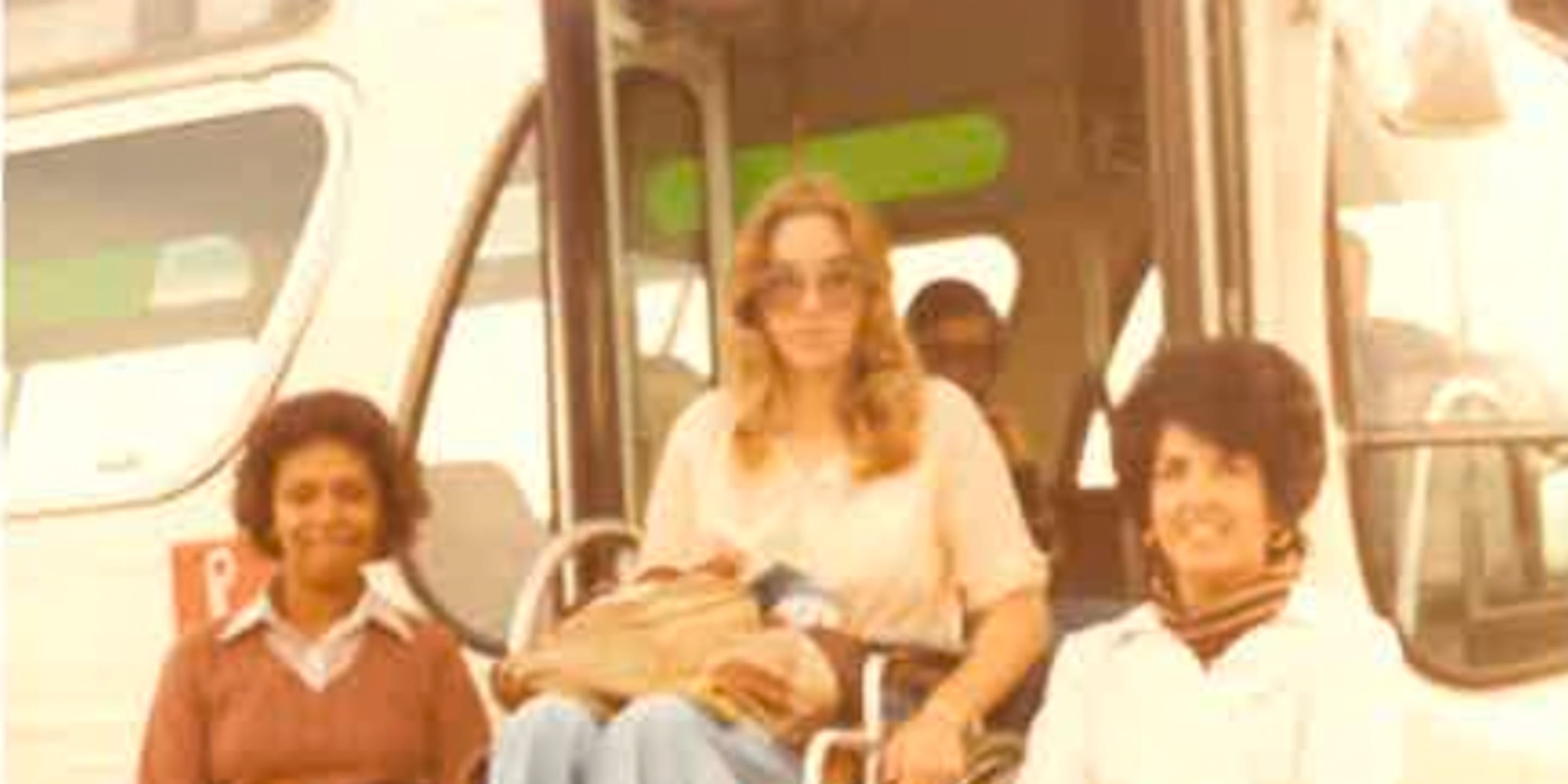
RTD employee shares story of grandmother’s experience with first wheelchair-accessible RTD bus
“We will ride!” That is the declaration 19 disabled rights activists, known as the Gang of 19, chanted in unison for 24 hours at Colfax Avenue and Broadway on July 5, 1978. Led by the Rev. Wade Blank, co-founder of Atlantis, a group dedicated to providing free, individualized care to those in need, the Gang of 19 surrounded two buses at the intersection, demanding RTD services be equipped with wheelchair lifts to allow riders with disabilities the chance to use the bus just as the able-bodied could. When the dust settled from the protests, RTD began retrofitting all buses with new wheelchair lifts.
When the first bus rolled out of the garage, ADA (Americans with Disabilities Act) Office Manager Gabe Christie’s grandmother stood right there, capturing it assisting its first customer.
Norene Chambers, who joined the agency in 1977 as a bus operator, began her day on July 5, 1978, expecting it to be just like any normal day. However, her radio began lighting up about a protest starting at Colfax Avenue and Broadway in downtown Denver.
“She remembered hearing about the protests over the radio and being like, ‘Oh man, this is frustrating,’” Christie said. “As an operator, anything that throws you off in the field can be very frustrating.”
What Chambers didn’t know was the protest that was transpiring would change the way the world would view disabled people.
After the protest ended, RTD began the process of retrofitting wheelchair lifts on buses. Mechanics needed to learn how to repair them and operators needed to learn how to assist customers using the lifts. Retrofits were completed on routes 0, 15 and 40 in 1978; on other key routes in 1979; and across the entire fleet by 1982.
In the year after the protest, Chambers left her operator job for a position as a marketing representative in RTD’s Marketing Department. One of her first tasks was to get media attention on the first in-service bus that was wheelchair-accessible.
On Dec. 4, 1978, media, community members, employees and activists alike gathered at Colfax Avenue and Broadway to witness history again: the first customer in Denver to use a wheelchair lift to board a bus.
“She was worried it wasn’t going to go well,” Christie said. “She said, ‘I was going to show this bus off and it wasn’t going to work, and everybody was going to be back in the streets tomorrow because it wasn’t what people needed.’”
“She was worried that they had not done enough,” he added.
Anxiety filled Chambers’ mind all morning long, Christie said, with fears of the lift failing, not being able to fit the customer’s wheelchair onboard and the potential for mechanical failures consuming her thoughts as she anxiously awaited the arrival of the Route 15 bus.
It arrived at the same stop where the Gang of 19 protest happened, where a pair of customers in wheelchairs were waiting, along with media, activists and RTD representatives, all to see if this was the solution for which the Gang of 19 had protested.
The lift worked as intended and the customers were able to safely board the bus while remaining in their wheelchairs, a landmark moment for accessibility in transit.
Cheers were heard all around the stop, and Chambers breathed a sigh of relief.
“She felt like she made someone’s life better through connections,” Christie said.
Chambers felt the urge to share the news with Blank, whom she knew personally from her time as a bus operator and her involvement in the community.
“She was ready to be smug about it,” Christie said.
Once the celebrations ended and the lifts were deployed systemwide, new challenges began to spring up.
“One of the things she said the agency noticed pretty quickly was the expected ridership fell short,” Christie said. “They expected to see folks in wheelchairs on every bus taking advantage of every single lift.”
There were some frustrations around the lower-than-expected ridership, but Chambers recalls they subsided when those who were frustrated were introduced to a different perspective.
“She said, ‘Now that it’s all accessible, anyone can ride any bus now,’” Christie said. “If you build it, they will come.”
Other challenges stemmed from inconsistencies in wheelchair securement space versus seating capacity. Additionally, the RTD Board of Directors at the time pushed back against purchasing new buses with lifts because of the ridership levels.
In the years following the protest, the Board voted to begin purchasing buses that were wheelchair-accessible. By 1985, Denver became the first metropolitan region in the country to provide wheelchair-accessible service on all Local buses.
This change, Christie said, prompted the City and County of Denver to begin work on making sidewalks more accessible and removing curbs in high-trafficked locations to allow people who use wheelchairs to more easily navigate the city.
RTD’s buses today are designed to be near curb level, with the ability to be lowered to meet smaller curbs. The buses also have a pop-out ramp at both doors available for customers who need it. Coach-style buses include a dedicated lift near the middle of the bus with a securement area for wheelchairs.
Today, at 76 years old, Chambers has a brand-new perspective on the lifts and accessibility. She requires the use of a walker to move around due to her age.
“She said, ‘I never thought I would have to use it when I helped launch it,’” Christie said. “She rides the bus to do her grocery shopping and to go to her medical appointments. She needs the ramp.”
What once began as a day of frustration has changed the way mobility is viewed across the United States and beyond. Now, customers with disabilities can access the same places able-bodied customers can, all standard and by design.
Chambers told Christie: “‘I can get on any bus, anywhere, at any time with my walker and not be worried.’”